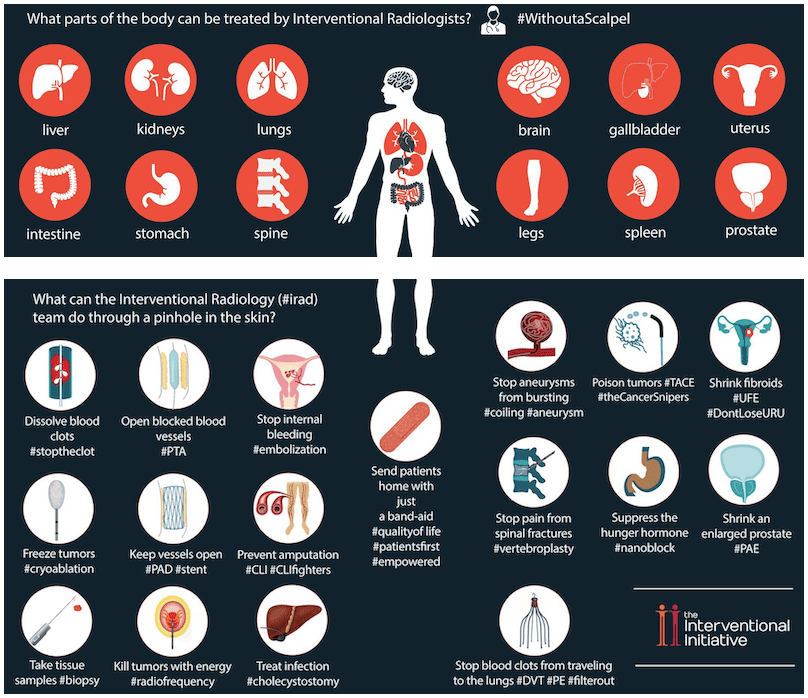What is Interventional Radiology (IR)?
Interventional Radiology (IR) is a specialized field of medicine that offers minimally invasive alternatives to traditional open surgery for a wide range of conditions. Using advanced imaging technology, these procedures are performed through small incisions, leading to quicker recovery times, less pain, and reduced risk.
With the aid of high-tech imaging tools such as ultrasound, X-rays, CT scans, and MRI, interventional radiologists can navigate inside the body with remarkable accuracy. This allows them to treat even complex conditions—including cancer and cardiovascular disease—with greater precision and significantly less disruption to the body.

Why Interventional Radiology?
- Reduced risk.
- Less pain.
- Shorter recovery times.
Interventional Radiology (IR) offers advanced, minimally invasive procedures that are often performed on an outpatient basis. These treatments can significantly shorten hospital stays, lower the risk of complications associated with open surgery, and, in many cases, be lifesaving.
Using just a small incision, interventional radiologists navigate specialized instruments through the body with image-guided precision to treat complex—and sometimes critical—medical conditions. IR is a trusted and widely used option for managing a variety of health issues, including heart and vascular disease, stroke, cancer, uterine fibroids, varicose veins, and many other serious or chronic conditions.
Who is an Interventional Radiologist?
An Interventional Radiologist is a board-certified medical doctor (MD) with specialized expertise in both advanced diagnostic imaging and minimally invasive, image-guided treatments. These physicians are uniquely trained to diagnose and treat a wide range of conditions using cutting-edge imaging technology to guide precise, targeted therapies. By blending their deep knowledge of medical imaging with minimally invasive techniques, interventional radiologists are able to offer personalized treatment options that minimize risk, reduce recovery time, and avoid the need for traditional surgery whenever possible.







